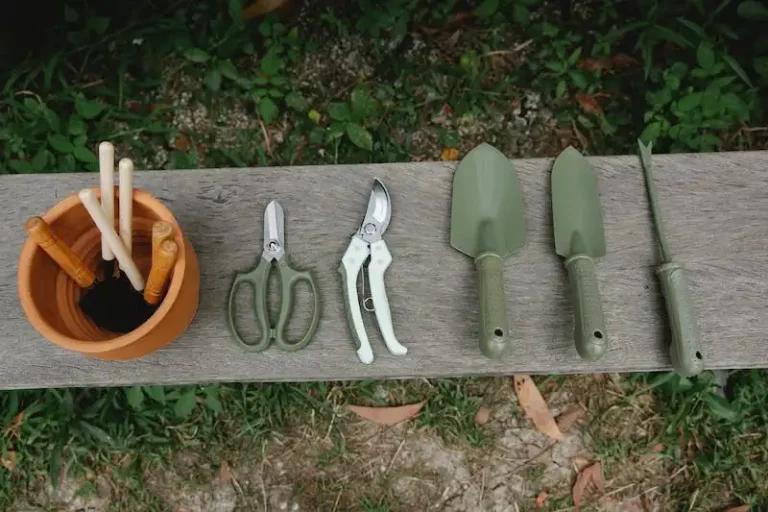Snowdrops, or Galanthus, are small, delicate flowers that are often the first to bloom in late winter or early spring. With their bright white petals and vibrant green foliage, they bring a sense of renewal and hope after a cold winter. If you’re new to gardening or just want to add a touch of beauty to your outdoor space, snowdrops are a great choice. In this article, we’ll cover the basics of growing snowdrops, including where to plant them, how to care for them, and how to propagate them for more blooms.
The most important thing to know about snowdrops is that they thrive in cool, moist conditions. They prefer partial shade and can be easily grown under deciduous trees or shrubs. They are also suitable for a variety of hardiness zones, making them a versatile choice for gardeners all over the world. Whether you live in a cold climate or a milder one, chances are you can find a snowdrop variety that will thrive in your garden.
When planning to grow snowdrops, it’s essential to choose the right location. They prefer well-drained soil and don’t like to be in standing water. Plant them in an area where the soil doesn’t get overly wet, especially during the winter months. Snowdrops can be planted in groups or clusters, as they have a unique ability to multiply and form beautiful carpets of flowers. They also do well when planted in the front of a garden bed, as their small size allows them to be easily seen and appreciated.
Once you’ve chosen the right location for your snowdrops, it’s time to plant them. Dig a hole that is about 2-3 inches deep and place the snowdrop bulbs inside, with their tips facing upwards. Gently cover them with soil, making sure they are securely nestled in the ground. Water the newly planted bulbs thoroughly and keep the soil slightly moist until they establish roots. Once they have settled in, snowdrops require minimal care. They can tolerate dry spells, but they prefer regular watering as it helps them bloom and grow.
When it comes to pests and diseases, snowdrops are relatively pest-free. They are rarely bothered by deer or rabbits, and their leaves contain alkaloids that deter most insects. However, if you notice any signs of pest damage, you can treat them with organic pest control methods or remove the affected leaves. Snowdrops are also resistant to most common diseases.
If you’re looking to add more snowdrops to your garden, they can be easily purchased from nurseries or online stores. They are typically sold as dormant bulbs in late summer or early fall, and it’s best to plant them as soon as possible after purchase. Snowdrops can also be propagated by dividing established clumps in late spring or early summer. Simply dig up the clump, separate the bulbs, and replant them in a new location. This will not only give you more snowdrops but also help to rejuvenate the original clump.
In conclusion, snowdrops, or Galanthus, are a charming addition to any garden. With their early bloom time and small size, they add a touch of color and beauty when most other plants are still dormant. They require minimal care and can be easily grown by gardeners of all skill levels. Whether you plant them in the front of your garden bed or under trees, snowdrops will bring joy and delight to your outdoor space.
Information About Snowdrops And When To Plant Snowdrop Flower Bulbs
Snowdrops, also known as Galanthus, are small white flowers that are among the first to bloom in late winter or early spring. They are often seen as a sign of the end of winter and the beginning of the gardening season.
The snowdrop flowers have a characteristic drooping shape and are usually white, although there are some varieties that have yellow or green markings. They are typically about 3-4 inches in height and spread out to form small clumps. Snowdrops can be grown in USDA hardiness zones 3-9.
When it comes to planting snowdrop flower bulbs, it is important to choose the right location. Snowdrops prefer a shady area with well-drained soil. They can tolerate light exposure to sunlight, but too much direct sunlight can cause the flowers to wither quickly.
Plant snowdrops in the fall, about 2-3 inches deep and 3-4 inches apart. It is best to plant them in groups or clusters rather than individually, as they tend to look better when displayed in carpet-like arrangements. Snowdrops can also be planted underneath trees or alongside other plants like hellebores to create a beautiful contrast.
Before planting, it is a good idea to amend the soil with organic matter, such as compost, to improve drainage and fertility. Snowdrops are not heavy feeders, but they can benefit from a light application of balanced fertilizer in early spring to promote healthy growth and blooming.
After planting, water the snowdrop bulbs thoroughly and then keep the soil slightly moist. Snowdrops are relatively low-maintenance plants and will take care of themselves once established. However, watering during periods of drought or excessively dry weather is recommended.
When snowdrops start blooming, they will produce a single stalk with a single flower. Some varieties, like the double snowdrop (Galanthus nivalis ‘Pleno’), may have multiple layers of petals, creating a fuller appearance. Snowdrops generally bloom for a few weeks before fading. Once the flowers have dried, it is best to leave them in place, as they will help nourish the bulbs for the next growing season.
If you are interested in propagating snowdrops, it can be done through dividing clumps or through the pro method. Dividing clumps involves digging up a large clump and separating it into smaller groups, each with its own roots and bulbs. The pro method, also known as twin scaling, involves cutting the bulbs into smaller sections and treating them with fungicide before planting.
In conclusion, snowdrops are charming little flowers that can easily be grown in the garden. By following the basics of planting and caring for snowdrop flower bulbs, you can enjoy their beautiful white blooms and early arrival every spring.
Information about Snowdrop Bulbs
Snowdrop bulbs, also known as Galanthus, are small flowering bulbs that produce charming white flowers. They are well-known for being one of the first flowers to bloom in the spring.
Snowdrop bulbs are best planted in well-drained soil in an area with full to partial sunlight. They can be planted in the ground or in containers. Snowdrop bulbs are typically sold in the late summer or early fall, and they should be planted soon after purchase to ensure their viability.
When planting snowdrop bulbs, dig a small hole and place the bulb with its pointed end facing upwards. Cover the bulb with soil and gently firm it in place. Water the area thoroughly after planting to encourage root establishment.
Snowdrop bulbs can be left undisturbed in the ground for many years, and they will often multiply and form clumps over time. If you wish to increase the number of snowdrops in your garden, they can also be propagated by lifting and dividing the bulbs during their dormant period. This is typically done after the flowers have died back and the foliage has turned yellow.
When caring for snowdrop bulbs, it’s important to provide them with regular moisture during their growing season. However, they are relatively low-maintenance plants and require minimal care once established.
Snowdrop bulbs are particularly effective when planted in large drifts or carpets, creating a natural and enchanting display. They are also an excellent choice for smaller garden spaces and can be used as a border or underplanting for shrubs.
There are many varieties and types of snowdrop bulbs available, ranging in color, height, and spread. Some have unique markings on their petals, while others have double or even triple layers of flowers. Snowdrop enthusiasts sometimes even name their own special varieties.
In colder zones, snowdrop bulbs are often planted in the fall for early spring blooms. In milder climates, they can be planted in late winter or early spring for a similar display.
If you’re interested in growing snowdrop bulbs, the following basics will guide you through the process:
- Choose a suitable planting location with well-drained soil and the right amount of sunlight.
- Prepare the soil by breaking it up and removing any weeds or rocks.
- Plant the bulbs at a depth of 2-3 inches with the pointed end facing upwards.
- Water the area thoroughly after planting.
- Maintain regular moisture during the growing season.
- After the flowers have bloomed and the foliage has turned yellow, the bulbs can be lifted and divided if desired.
- Leave the bulbs in the ground to multiply and bloom again the following year.
With a little care and attention, snowdrop bulbs can brighten up your garden with their delicate and graceful flowers.
Photo by Rosanna Bell licensed under CC BY 2.0
Where to Plant Snowdrops Bulbs
Snowdrop bulbs, also known as Galanthus, are delightful small flowers that can brighten up any winter garden. They are easy to care for and can be planted in various locations in your garden. Here are some tips on where to plant snowdrop bulbs:
In the Ground: Snowdrops are typically planted in the ground, where they can establish themselves and increase in number over the years. Choose a spot with well-draining soil and partial to full sunlight. Snowdrops can tolerate some shade, but they will bloom best with more sunlight.
In Little Gardens: Snowdrops are perfect for small gardens. They can easily be planted as a part of a winter color design or as a ground cover under trees or shrubs. Combine them with other early blooming plants like Hellebores to create a beautiful carpet of flowers.
In Flower Beds: Snowdrops can also be planted in flower beds, where they will add a touch of elegance to your garden. Plant them in the front of the flower bed so that their delicate flowers can be easily seen and enjoyed.
Indoors: If you don’t have outdoor space or want to enjoy snowdrops up close, you can also plant them in containers inside your home. Place the containers in a cool, bright location and water them regularly.
In Other Zones: Snowdrops are commonly found in temperate regions and can tolerate cold winters. However, they may struggle in regions with extremely hot summers. If you live in a zone with harsh summers, consider planting snowdrops in a partially shaded location to protect them from intense sunlight.
When Planting: Snowdrop bulbs should be planted in the fall, just before the ground freezes. Follow these steps for successful planting:
1. Prepare the soil by removing any weeds or debris.
2. Dig a small hole that is about three inches deep and place the snowdrop bulb inside, with the green and growing part of the plant facing upwards.
3. Cover the bulb with soil and gently pat it down.
4. Water the newly planted bulb.
Care and Maintenance: Snowdrops are low-maintenance plants, but they still require some care to thrive:
1. Watering: Snowdrops prefer moist soil, so water them regularly, especially during dry periods.
2. Dividing: Every few years, you may need to divide the bulbs to keep the snowdrops healthy and prevent overcrowding.
3. Diseases: Snowdrops are generally resistant to diseases, but you should still keep an eye out for common issues.
In Conclusion: Snowdrops are beautiful and easily grown flowers that can bring joy to your garden in the winter. Whether you choose to plant them in the ground, in little gardens, flower beds, indoors, or in other zones, with proper care and planning, you can enjoy their charming flowers year after year.



